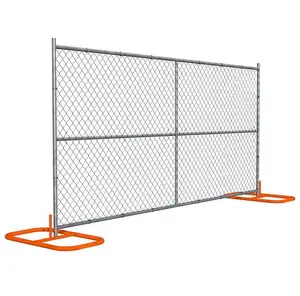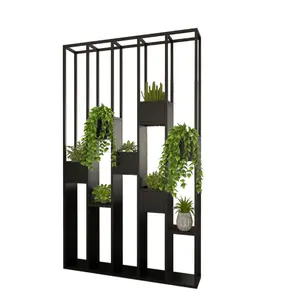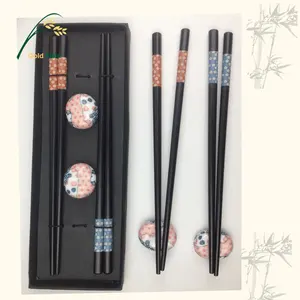Popular in your industry















Top categories
About temporaty fencing
Introduction
The construction industry is characterized by a high rate of fatal accidents and significant loss of working days annually, making safety measures indispensable. One such measure, often overlooked, is the use of temporary fencing. This article explores the importance of temporary fencing in construction sites, its various types, best practices for implementation, legal considerations, and its impact on worker safety and productivity. We will also delve into real-world case studies demonstrating the successful use of temporary fencing.
Understanding Construction Site Hazards
Construction sites are notorious for their hazards, with fatal accidents occurring at twice the rate of other industries. Common hazards include slips, trips, falls, working at height, moving and falling objects, manual handling, excessive noise, electrical hazards, and exposure to harmful airborne materials. Recognizing these hazards is the first step towards implementing effective safety measures.
The Importance of Temporary Fencing in Construction Sites
Temporary fencing is a vital tool in construction sites, enhancing safety, security, and overall project management. It acts as a physical barrier, protecting workers, the public, and valuable assets from potential risks. Temporary fencing aids in controlling access, managing crowds, and complying with safety regulations. Its flexibility and adaptability contribute to efficient site management, ensuring smooth progress of construction projects.
Types of Temporary Fencing
Temporary fencing, designed for temporary use, is primarily used for construction sites, special events, and crowd control. The common types include panel fencing, chain-link fencing, and pedestrian fencing. Chain link fencing, made from interconnected metal wires, is strong, durable, and easy to install and remove. Block and panel fencing, composed of panels connected by blocks, is quick to set up and effective in maintaining construction site safety. Pedestrian fencing, often used to control pedestrian traffic, is lightweight and easy to set up, enhancing pedestrian safety.
Chain Link Fencing
Chain link fencing is a legal requirement for most construction projects. It can be installed on various surfaces including sand, soil, asphalt, and concrete, eliminating the need for large holes or removal of excavated materials. This type of temporary fencing, complying with ASTM A392-06 standards, offers superior exposure and corrosion resistance. Installed by qualified professionals, chain link fencing is extremely durable, making it ideal for new construction, home developments, public works projects, and disaster recovery.
Mesh Fencing
Mesh fencing is a versatile option for construction sites, offering both safety and privacy. These fence panels prevent unauthorized entry into work zones and eliminate distractions for construction crews. Mesh coverings on fence panels provide privacy, allowing crews to focus on their tasks. Additionally, these coverings prevent debris from escaping or entering the work zone, enhancing safety. Mesh fencing can also be used for branding, with logos screen printed onto the mesh for increased brand visibility.
Picket Fencing
Picket fencing, often used in residential settings, can also serve as an effective temporary fencing solution on construction sites. It's not only aesthetically pleasing but also functional, keeping out unwanted intruders while protecting valuable assets. Building a picket fence involves measuring the area, digging and placing posts, adding stringers to posts, nailing pickets, and applying paint or stain. Materials needed include pickets, treated 2x4 pine, 4x4 pressure-treated posts, and screws. Tools required are a post hole digger, a saw, a brad nailer, and a level. This type of fencing can be customized to fit the specific needs of a construction site.
Implementing Temporary Fencing: Best Practices
Implementing temporary fencing requires careful consideration for safety. Fences should be installed securely, preferably in a zig-zag fashion or with perpendicular panels at intervals to prevent toppling. Using flat ground stands can help prevent pedestrian accidents. It's crucial to keep the fence line clear of debris and materials that could compromise the fence's stability. If using fence screening for privacy, ensure the fence is secure as it can increase the risk of toppling in high winds. Regular inspection of the fence is necessary to ensure its stability and safety.
Legal and Regulatory Considerations for Temporary Fencing
The Occupational Safety and Health Administration (OSHA) mandates temporary fencing at construction sites to ensure safety. These regulations, outlined in OSHA Standard 1926, necessitate fencing to limit access to hazardous areas. Furthermore, OSHA regulation 1926.34(a) requires each construction site structure, including fencing, to have at least one easily accessible exit. The type and height of the fencing depend on the project, with residential construction requiring a minimum of four feet and commercial sites needing at least six feet tall fencing.
The Impact of Temporary Fencing on Worker Safety and Productivity
Temporary fencing is a crucial element at a construction site, primarily for the safety of workers and other personnel. The Occupational Safety and Health Administration (OSHA) provides guidelines for safety standards, including the use of temporary fencing. The fencing should be sturdy, securely fastened, at least six feet tall, and regularly checked for stability. Additionally, if a temporary fence wrap, windscreen, or privacy screen is used, its integrity should be routinely checked. Temporary fencing also serves as a visual barrier, indicating ongoing construction work, and helps maintain materials within the construction site.
Case Studies: Successful Use of Temporary Fencing
Portable fencing plays a crucial role in construction sites, ensuring safety and security. For instance, in Australia, it's a legal requirement to erect portable fencing when building a new home. This fencing keeps debris contained, safeguards the public from potential hazards, and protects the site from unauthorized intrusions. Moreover, portable fencing is also used during pool installations, providing safety and meeting legal requirements. It's often included in pool installers' contracts, demonstrating its importance in such projects.
Conclusion
Temporary fencing plays a pivotal role in ensuring safety and security at construction sites. It serves as a physical barrier, protecting workers, the public, and valuable assets from potential risks. With various types available, such as chain link, mesh, and picket fencing, it offers flexibility and adaptability to suit different project needs. Adherence to best practices and legal regulations is crucial for effective implementation. As demonstrated through case studies, temporary fencing has proven to be an indispensable tool in successful construction projects. Therefore, understanding and utilizing temporary fencing is key to maximizing construction safety and enhancing productivity.























